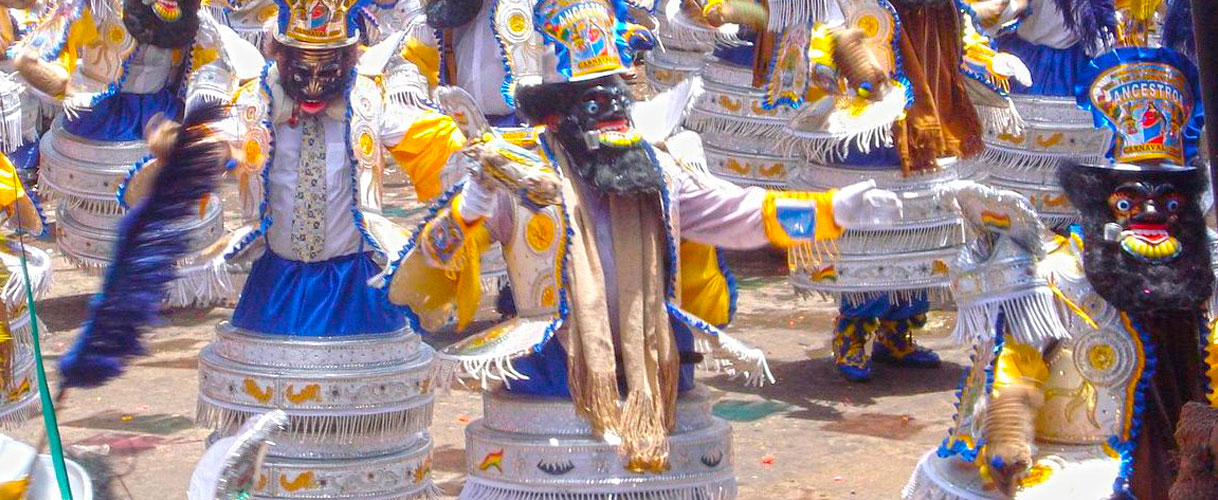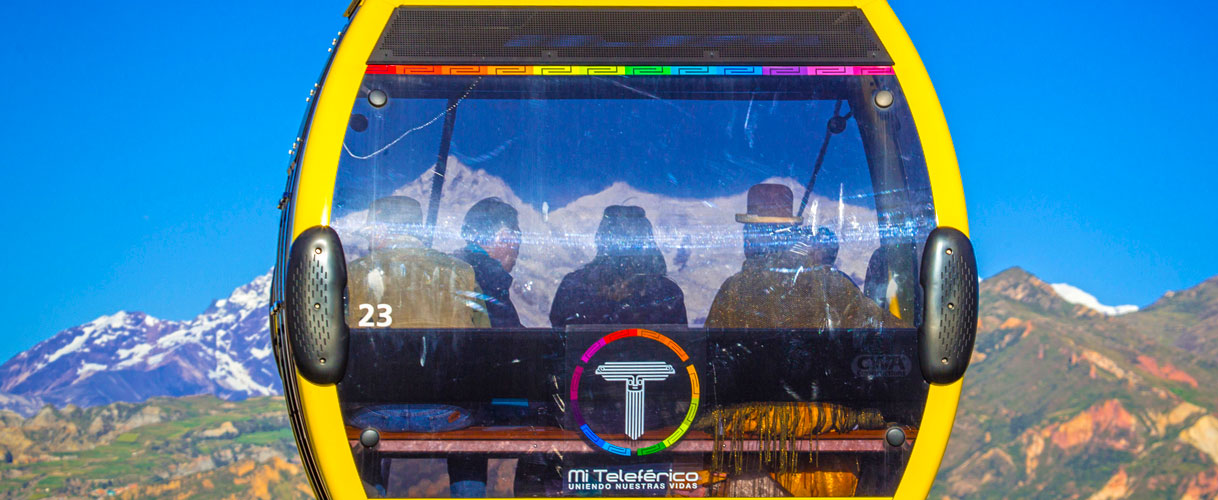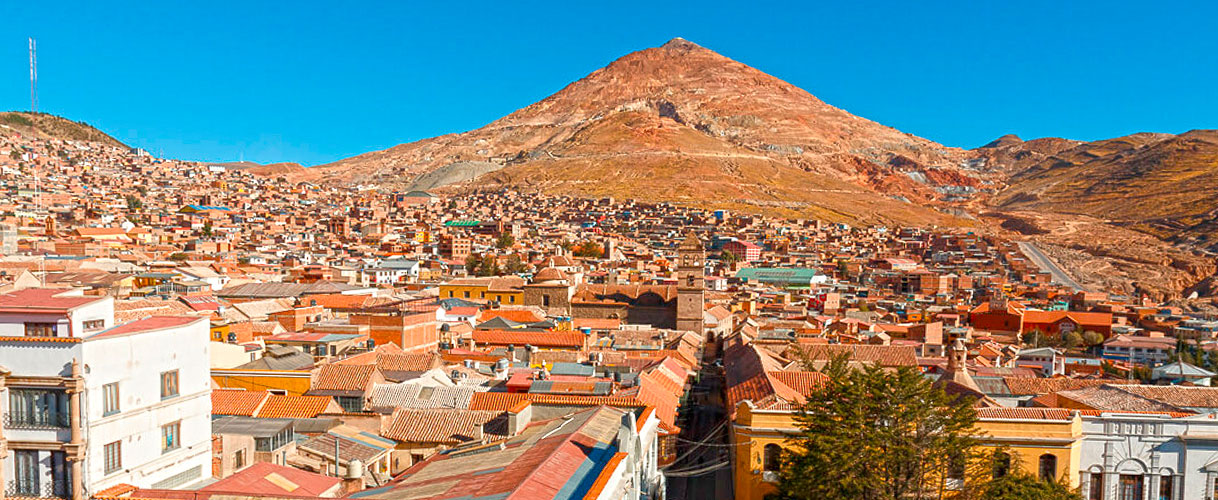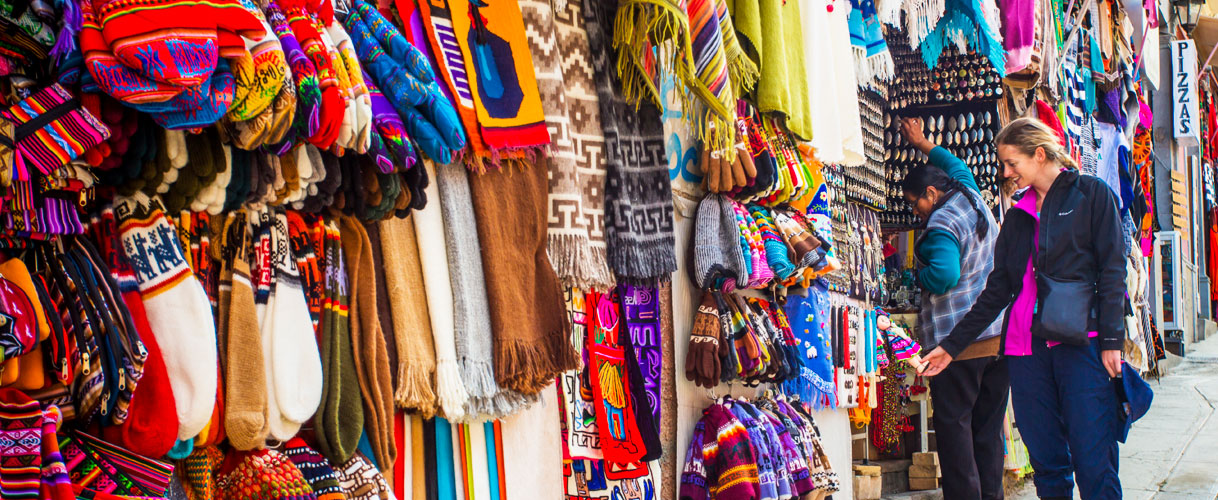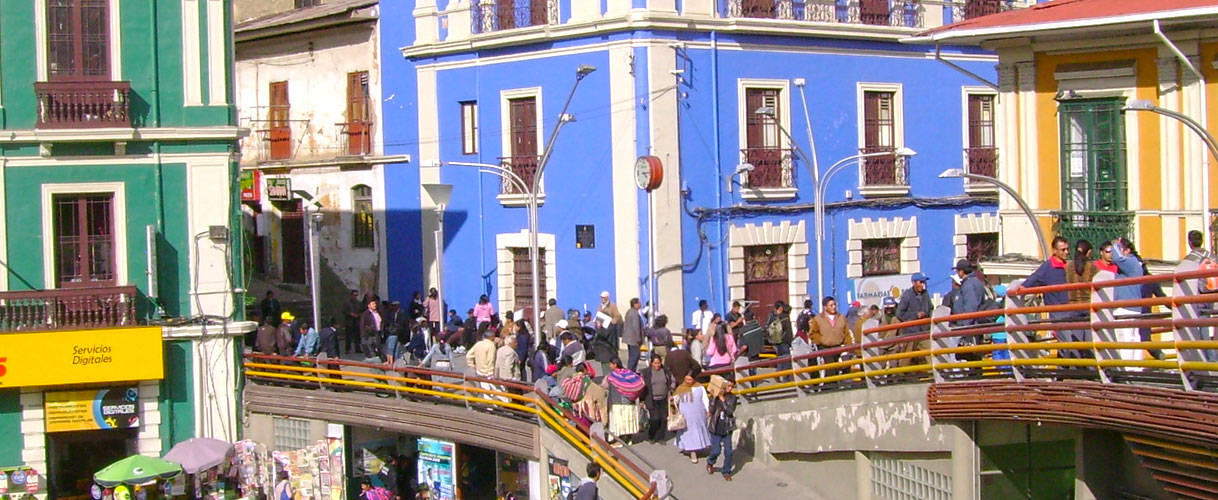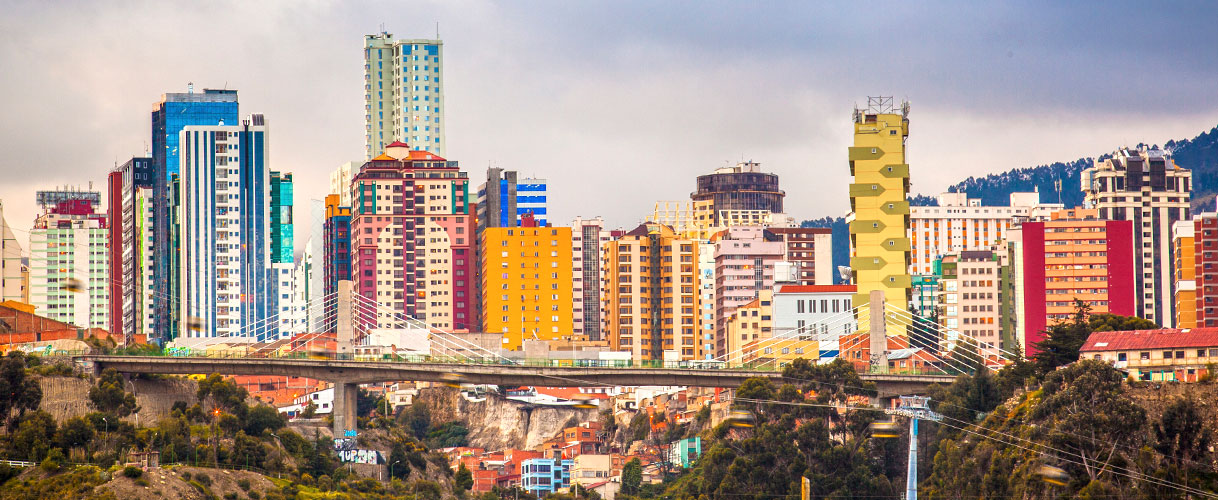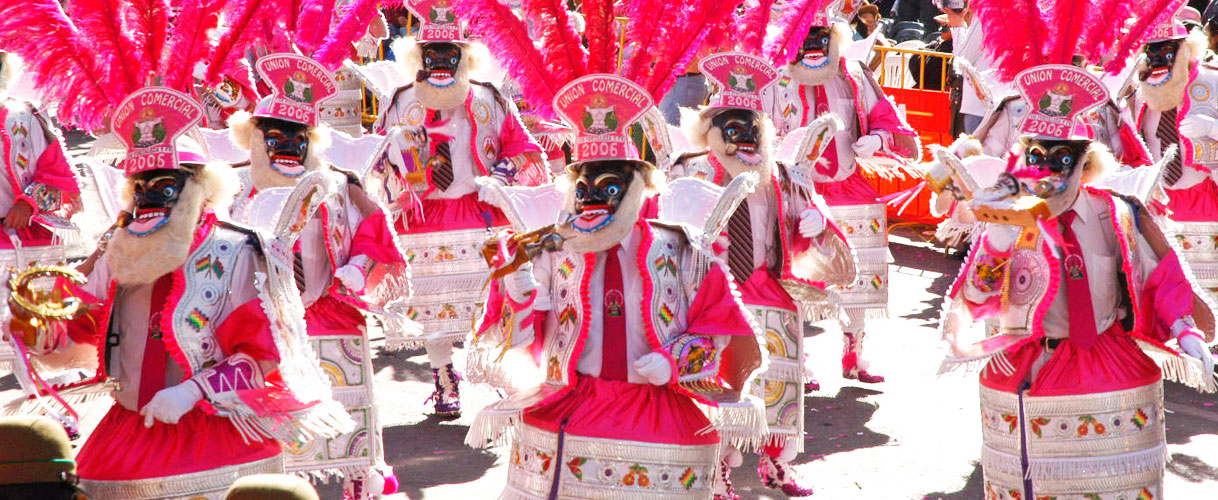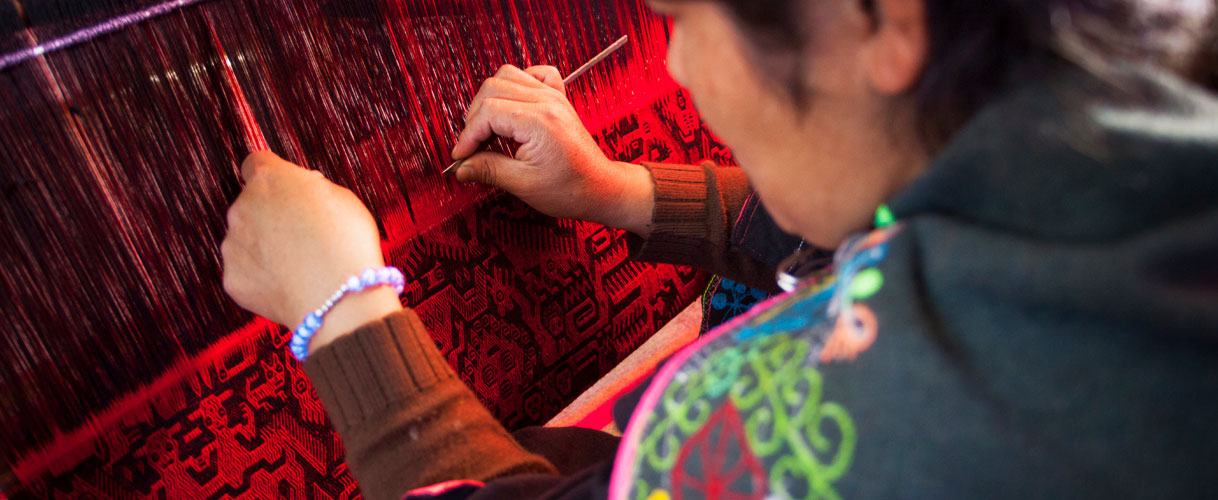Altiplano: La Paz, Potosí and Oruro
Travel information
ALTIPLANO (HIGH PLATEAU)
Located in the midst of two mountain ranges of incomparable beauty; the Cordillera Oriental and the Cordillera Occidental, is a territory of over one hundred thousand square kilometers, at an average altitude of thirty eight hundred meters above sea level (m.a.s.l.). for the person who arrives here for the first time, the visual impact is astonishing The visitor may appreciate a nearly endless, seemingly deserted plain, framed by a series of snowy mountain peaks. This plain is cut by natural undulation that seemingly replicate time and time again the same scenery in tones of ocher, yellow and violet, with clumps of hardy pampas grass or dark green thola that takes on tender green tones in the rainy season.
Traversing the mountain and Altiplano region one finds camels –llamas, alpacas and vicuñas- in their natural habitat, domesticated in immemorial times, but who range apparently free, and constitute the basic of the region’s economy. We can also see other animals such as shy deer, puma, wildcats, and large rodents such as the viscacha and the nearly extinct chinchilla. Likewise, among the bird species one can hawks, pink flamingos, and several types of ducks such as the darling long-necked anhinga, and the green and blue ibis in dark busy flocks.
The typical high-mountain vegetation includes pampas grass, thola and the peat-moss-like yareta. There are also woody, hardly trees with capricious trunks such as the queñua and the Kiswara. Finally, among native vegetables species we can name the potato (in dozens of varieties), oca (a sweet tuber), quinoa, tarhui, cañahua (both grains) and amaranth are prized for their high nutritional value, included at the gastronomical offer.

LA PAZ
It is home to the world's highest government (is 3650 masl, 300 masl to the city of Cuzco - Peru) and is characterized by a personality unequaled among Andean cities, because the conjunction cultural, religious and political has marked throughout its history. Its location in a basin at the foot of Mount Illimani, the highest mountain and sexy Cordillera Real de los Andes, allows its inhabitants to enjoy incredible and diverse landscapes surrounded by mountains and buildings.
The city of La Paz was founded by Spanish colonists in 1548 under the name of "Nuestra señora de La Paz", referring to the end of a civil war developed between two Spanish sides. This foundation took place in the village of Laja, 35 km in what is today the city of La Paz. Due to inclement weather the Altiplano, three days after the city moved up the river valley Choqueyapu, warmer and populated.
Today La Paz is the most cosmopolitan city in the Andes, with nearly 1 million inhabitants, which in its agglomeration includes two cities, El Alto and La Paz, which coupled with its population of over one million and a half. The city of El Alto is a city record for being the youngest in the country, the high population growth, housing the largest informal fair country (The Fair July 16) and the most influential in recent policy years.
Attractions in the city of La Paz: The Murillo Square, the Witches Market and the Moon Valley, among the most important. Another facet of the city located in the bohemian neighborhood of Sopocachi, with a multitude of bars and cultural centers. Additionally, admire one of the central features of daily life in the city, visit fairs and markets, one of the most important is the Rodriguez market, in the district of San Pedro, very busy during the weekends.
From the city of La Paz are natural wonders like Titicaca Lake and the Madidi National Park, and the most important archaeological site of Bolivia: Tiwanaku. As for adventure tourism the most visited attraction is the "Death road" to Los Yungas - Coroico, where he performs on a mountain bike descent. The proximity of the city of La Paz to the Andes that allowed to pass into snowy mountain climbers as Huayna Potosi and the Group attracted hikers Condoriri and Pre-Columbian Roads of Choro and Takesi.

POTOSÍ
It is the capital of the department of Potosi, the city is located at an altitude of 4,000 meters above sea level making it the highest city in the world. It rests at the foot of the hill "Sumaj Orck'o 'or' Cerro Rico', argentiferous mountain that was the most important in the world of the colony, gave rise to most of the silver used by the Spanish crown. According to official records, extracted 45,000 tons of pure silver from Cerro Rico between 1556 and 1783.
Potosi was founded in 1546, generated enormous wealth rapidly, becoming one of the largest cities in the world at the time, with a population of over 200,000 inhabitants. Tradition says that the amount of silver that the Spanish conquistadors found was enough to build a bridge constructed completely silver from Potosi to Europe.
During the battles for the independence of Bolivia, much of the wealth was looted or transferred to Europe or other parts of Spanish rule. By then the population was no more than 10,000 inhabitants.
Like Sucre, Potosí is also on the list of World Cultural Heritage Site by UNESCO. Attractions: The mines of Cerro Rico, The Mint, Cloister of Santa Teresa.

ORURO
During the colonial city founded in 1606 as a silver mining center in the Urus region, was originally called "Villa de San Felipe de Austria". Oruro in 1781 led to the first cry for freedom in Latin America, expelling the Spanish and declaring the town as an independent.
Today is one of the smaller cities of the country, however retains its attractive European design aspect of the time, the most important activity is the Carnival of Oruro, declared in 2001 as a "Masterpiece of Oral and Intangible Heritage of Huamanidad" by the great religious and cultural value that unfolds during two days of privateering.
Among the most imporant dances presented in the Carnival of Oruro to be mentioned is "La Diablada", which originated in ancient Andean cult to be malignant, which was later adapted to the devil from the colony, from the Catholic vision.
Excerpts from history
Many things have been said about Oruro. Some have considered its pre-Columbian mining history mentioned in the 1535 colonial account of the Urus’ familiarity with mining production. In those days, Lorenzo de Aldana. “…with threats and flattery persuaded the natives, the Urus. To show him the places from which they extracted the almost pure silver which they used on a small scale for their tributes to the idol of their Huacas, as well as the gold to adorn their ceremonial costumes. Aldana secretly worked the lode in the Pie de Gallo mountain”.
In colonial times, “…The place was known as Uru-uru, a name which was surely due to the presence of the Uru Indians in the vicinity. Father Medrano dedicated the settlement and the mines to the Archangel St Michael, a dedication which later was recognized by the city and which still prevails”.
Another version has it that “St Michael was the name of a lode located in the Pie de Gallo mountain, which belonged to a famous miner of the times, Don Diego de Alemán”.
The altiplanic city of the Urus was also called the “Villa Minera” or Mining Town, and it has been argued that it was around 1557 “…when for the first time here there was talk of the discovery of silver mines in the Paria region, in the mountains rising above Oruro”. These authors also mention that Oruro is one of the colonial cities which is still a departmental capital in Bolivia and that “…it and Potosi were the only ones founded during the mining industry boom”. They also remark that “…in its day, it became so important that it was classified as the second largest township both demographically and economically in the entire administrative district at Charcas”.
November 1, 1606 saw the foundation of the town of San Felipe de Austria as a result of a decree issued by the Supreme Court judges of La Plata, despite the conflict pitting the Imperial Town (Potosí) against San Felipe de Austria (Oruro).
During the 17th and 18th centuries, the city had its ups and downs depending on the mining situation. “Mining was the principal economic activity of Oruro. It was the main concern of the town’s elite and paid most of the revenue to the Royal Treasury”.
That 16th century settlement, later declared a township, by the 19th century had become the city.

